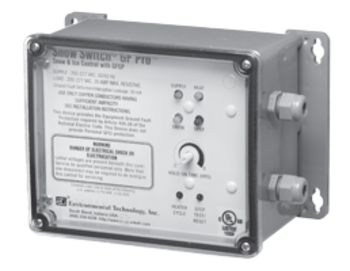Advice on Installing and Testing Roof and Gutter Heat Trace
- November 30, 2021
- Best Practices
- Electrical
When installing roof and gutter heat trace on a commercial building, there are several key considerations to ensure proper installation.

“There is more to heat trace than meets the eye.”
Be sure to use an appropriate controller for your heat trace installation and consider the following factors when making your selection:
- Can the controller include integral GFEP protection? If so, this eliminates the need for an expensive GFEP breaker.
- You must coordinate the controller voltage and phase with cable selected for the application.
- Controllers normally include a remote thermostat to mount on the exterior of a building to turn off the system if temperature reaches over 40 degrees F.
A megger test is used to test insulation resistance between conductive core and grounding braid. It can also detect damage that can result in a cable short to ground. A failure could trip a circuit breaker or cause fire. This test should be performed at the factory, after receipt at job site, after cable install, after insulation, at start-up and periodically per maintenance procedure.
A cold resistance test is used to test resistance between cable buss wires and as a quick test to verify cable output. This test should be performed at the factory, after receipt at job site and prior to installation.
A stabilized current test is used to assess cable current at full voltage. This insures cable power output is correct for design and is stable. The best time to perform this test is after installation, at start-up and periodically per maintenance procedure.
And lastly, an end of circuit voltage test is used to test voltage at the end of a line. It verifies proper voltage applied and verifies buss wires are good over entire length of cable. This test is ideal to perform at start-up and periodically per maintenance procedure.
As you prepare to install roof and gutter heat trace, Van Meter can assist with expert consultation and the right products to ensure proper installation.
Additional Resources:

BRAD MEYERS
EMPLOYEE-OWNER, ACCOUNT MANAGER
Meyers has more than 18 years in the electrical industry; he worked 14 years as a journeyman electrician prior to joining Van Meter in 2017.